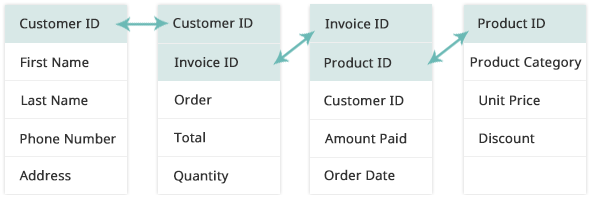Plan before creating an application
It is essential to know the purpose for your database or the problem you want to solve using your application. You must consider the following points before you start creating an application.
- What information do you want it to capture maintain? For example, “To track my orders” , “To manage my inventory”, etc.
- Classify the information to be stored into different categories. For example, a database meant to track orders will store data such as "Order", "Quantity", and "Amount". A database for inventory details can record details such as "Product", "Product Type", "Quanity", and "Stock Left". Each individual data entry then becomes a field.
- Try to distribute the data into as many fields as possible. For example city, state, country and code to collect an address. This makes it easier to perform Data Access actions such as Update and Fetch because of the availability of multiple fields.
- Based on the fields to be created, group fields containing similar data into one category. This category becomes a form. Note down the fields that fall in one category. For example,
Customer Form Order Form Invoice Form Product Form First Name Customer ID Invoice ID Product category Last Name Order Product ID Product ID Phone Number Quantity Customer ID Unit Price Address Total Amount Paid Discount Customer ID Invoice ID Order Date - In the table displayed above, try to match the different fields and see if any relationship can be created. Try to link pairs of match field from one form to match field of another form. For example,"Order" contains the ordered products and "Products" contains the products that can be ordered. You can create a relationship between the "Order" field and "Product" field so that "Order" will refer to the product list from the "Product" field.
- Similarly, Customer ID field in Customer Form and Order Form. Invoice ID field in Order Form and Invoice Form. Product ID field in Invoice Form and Product Form. The Customer ID field will store the customer details in the Customer Form and can be looked up from the Order Form to fetch the customer's details. The Invoice ID field in Order Form generates the invoice ID of the order and can be looked up from the Invoice Form to fetch the details of the order. The Product ID field stores the Id of the products in the Product Form and can be referred from the Invoice Form as well.

- Such relationship between related fields across forms helps avoid data duplication and reduces the complexity of the application. Once the database has been planned according to your requirement, you can get started with creating an application.
Also watch the video "Planning Apps" to know more about planning applications for your business.

